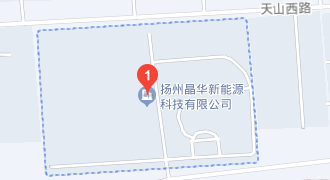Comparison of photovoltaic module power tests
发布日期:2018-05-17 浏览次数:
As is well known, PASAN and HALM transient simulators are devices for verifying the power of photovoltaic modules. Our company first used a useful inspection area of 2300 mm in 2015 × 1200 mm A+A+A+level (spectral matching degree A+, illumination non-uniformity A+, temporal instability A+) HALM transient solar simulator, and a new test area of 2600 was purchased this year × 1400mm A+A+A+PASAN simulator.
As a professional device for measuring the electrical functions of photovoltaic modules, the operating principle of the transient solar simulator is to use a high-power short pulse xenon lamp to simulate real sunlight, and then pass through a filter to make its spectrum meet the requirements of AM1.5. When testing the power of the module, the xenon lamp flashes once, and the photovoltaic module to be tested undergoes light irradiation to generate voltage and current. Within a few tens of milliseconds of flashing, along with gradually changing the electronic load of the power tester (the resistance value of the electronic load gradually changes from 0 to infinity, masking the entire situation of the module from short circuit to open circuit), the electrical function data of the module is collected multiple times to obtain the short circuit current, open circuit voltage, and maximum power point current of the photovoltaic module Information such as maximum power point voltage, fill factor, conversion power, series parallel resistance, maximum power, etc., and then the test data is corrected to the STC condition (1000W/m2, 25 ℃, AM1.5) through software.
In order to ensure the accuracy of module power testing, IEC60904-1 "Photovoltaic Equipment - Part 1: Measurement of Photovoltaic Current Voltage Characteristics" specifies the key guidelines for transient solar simulators:
Our company has investigated multiple photovoltaic module manufacturers and testing organizations, and roughly calculated the brand and proportion of transient solar simulators collected.
Our company compared the key parameters of PASAN and HALM simulators.
In order to compare the power differences between PASAN and HALM simulators in testing the same module, our company has selected several types of components commonly used in the industry: 5-gate half piece components, 9-gate half piece components, 11-gate half piece components, and laminated tile components for power testing and comparison. During the comparison process, the PASAN and HALM solar simulators were calibrated separately using the same standard component or standard battery. The inspection results showed that despite the different component types and processes tested, the difference between the power test values of the two simulators was very small. See Figure 3 for the comparison inspection effect.
Regarding the inspection of high capacitance effect components in the industry, such as HJT battery components and TOPCon battery components, the maximum difference between the power inspection values after comparing the "high-end hysteresis measurement" method selected by the HALM simulator and the "dragon back" method selected by the PASAN simulator is 1.2W.
In order to better serve customers, our company has not only provided two types of solar simulators, PASAN and HALM, but also prepared standard batteries from multiple traceability organizations, which can provide customers with different combinations of "packages", that is, different simulators can match different standard batteries.








